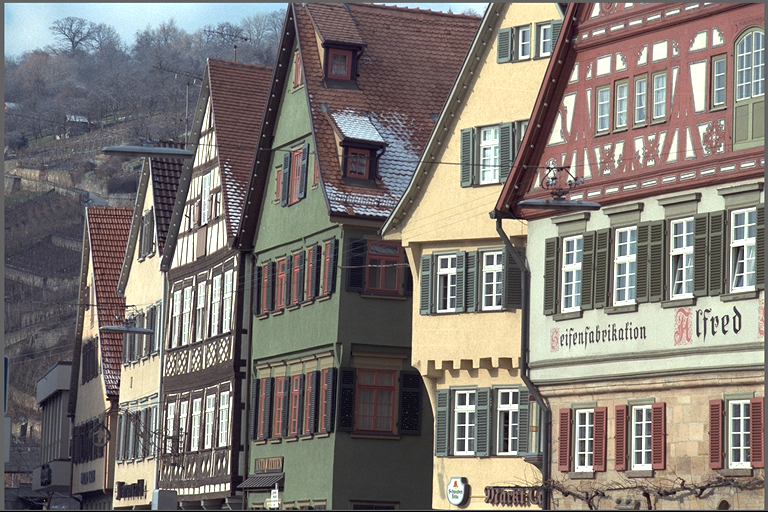Overview
The image statistics algorithm performs a two dimensional (2D) operation on the input image with the provided mask image of same dimensions. The mask defines the pixels considered for the operation. The algorithm calculates the per-channel statistics namely pixel count, sum, mean, variance, covariance of the input image masked by the mask image. Both variance and covariance are stored in a single 4x4 covariance matrix, where the diagonal is the variance and the non-diagonal elements are the covariance per-channel, considering 4 maximum number of channels.
| Input | Parameters | Output |
|---|---|---|
 | Mask is passed as NULL (All pixels considered). Flag is VPI_STAT_COVARIANCE |
\[ PixelCount = 393216 \] \[ Per-Channel Sum: \begin{bmatrix} 50316744 & 47610060 & 45611460 & 0 \\ \end{bmatrix} \] \[ Per-Channel Mean: \begin{bmatrix} 127.962097 & 121.078644 & 115.995941 & 0 \\ \end{bmatrix} \] \[ Covariance Matrix: \begin{bmatrix} 4062.606201 & 4022.210693 & 3351.239990 & 0 \\ 4022.210693 & 4263.414551 & 3651.921387 & 0\\ 3351.239990 & 3351.239990 & 3293.198730 & 0\\ 0 & 0 & 0 & 0 \end{bmatrix} \] |
Implementation
The image stats works calculating various per-channel statistics of the input image defined by the mask image. The various statistics that can be calculated have their own flags. The output is stored in an array of type VPI_ARRAY_TYPE_STATISTICS. The user can choose which statistics should be calculated.
- VPI_STAT_PIXEL_COUNT - Calculates the number of non-zero pixel values in the mask image.
- VPI_STAT_SUM - Calculates the per-channel sum (in float), of all the valid* input image pixels.
- VPI_STAT_MEAN - Calculates the per-channel mean (in float), of all the valid* input image pixels. This flag automatically activates the VPI_STAT_PIXEL_COUNT and VPI_STAT_SUM flags.
- VPI_STAT_VARIANCE - Calculates the per-channel variance (in float), of all the valid* input image pixels. This flag automatically activates the VPI_STAT_MEAN flag.
- VPI_STAT_COVARIANCE - Calculates the inter-channel covariance (in float), of all the valid* input image pixels. This flag automatically activates the VPI_STAT_VARIANCE flag.
*valid - Here valid means the input image pixels that have corresponding non-zero mask pixels.
C API functions
For list of limitations, constraints and backends that implements the algorithm, consult reference documentation of the following functions:
| Function | Description |
|---|---|
| vpiSubmitImageStats | Returns various image statistics of the input image. |
Usage
Language:- Import VPI module import vpi
- Run Image stats algorithm on the input image using the CUDA backend. with vpi.Backend.CUDA:output = input.image_stats(flags=vpi.ImageStatistics.COVARIANCE)
- Access the statistics from the output array. stats = output.cpu().view(np.recarray)[0]print(stats.covariance[0][0])
- Initialization phase
- Include the header that defines the needed functions and structures. #include <vpi/algo/ImageStats.h>Declares functions that implement image statistics algorithms.
- Define the input image object. VPIImage input = /*...*/;
- Create the output array. It has to be of type VPI_ARRAY_TYPE_STATISTICS. VPIArray output;vpiArrayCreate(1, VPI_ARRAY_TYPE_STATISTICS, 0, &output);VPIStatus vpiArrayCreate(int32_t capacity, VPIArrayType type, uint64_t flags, VPIArray *array)Create an empty array instance.
- Create the stream where the algorithm will be submitted for execution. VPIStream stream;vpiStreamCreate(0, &stream);VPIStatus vpiStreamCreate(uint64_t flags, VPIStream *stream)Create a stream instance.
- Create the mask image to be used. It must match the dimensions of the input image.. Can be NULL if no mask is required. Has to be of format VPI_IMAGE_FORMAT_U8. VPIImage mask;LoadImage(argv[2], VPI_IMAGE_FORMAT_U8, &mask);#define VPI_IMAGE_FORMAT_U8Single plane with one 8-bit unsigned integer channel.Definition: ImageFormat.h:100
- Include the header that defines the needed functions and structures.
- Processing phase
- Submit the algorithm for the image stats. It'll be executed by the CUDA backend. VPIStatus vpiSubmitImageStats(VPIStream stream, uint64_t backend, VPIImage input, VPIArray statistics, VPIImage mask, uint32_t flags)Returns various image statistics of the input image.
- Optionally, wait until the processing is done. vpiStreamSync(stream);VPIStatus vpiStreamSync(VPIStream stream)Blocks the calling thread until all submitted commands in this stream queue are done (queue is empty)...
- Submit the algorithm for the image stats. It'll be executed by the CUDA backend.
- Cleanup phase
- Free resources held by the stream and the input and output images. vpiStreamDestroy(stream);vpiImageDestroy(input);vpiArrayDestroy(output);void vpiStreamDestroy(VPIStream stream)Destroy a stream instance and deallocate all HW resources.
- Free resources held by the stream and the input and output images.
For more information, see Image Statistics in the "API Reference" section of VPI - Vision Programming Interface.
Performance
For information on how to use the performance table below, see Algorithm Performance Tables.
Before comparing measurements, consult Comparing Algorithm Elapsed Times.
For further information on how performance was benchmarked, see Performance Benchmark.